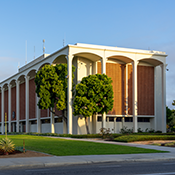
Tax Guide for Local Jurisdictions and Districts
Overview
We recognize that as a representative of a local jurisdiction or district, you may have questions related to local and district taxes. We created this guide to provide information regarding our services (such as our advance payment method) and help you understand processes such as how to incorporate a new city or impose a new district tax.
This guide is intended for cities, counties, or special taxing jurisdictions (districts). If you are a retailer who would like more information on how local and district taxes apply to your business or others, please see our Local and District Tax Guide for Retailers.
How to Use This Guide
Each section of this guide contains important information about local and district taxes for local jurisdictions and districts (and their representatives).
- Getting Started provides general information about local and district taxes and effective rates.
- Payments and Distributions provides distribution information such as current and historical statements, quarterly distribution summary reports, disbursement calendars, and advance payment methods for local and district tax jurisdictions. This section also covers the Electronic Fund Transfer (EFT) bank changes for local and special taxing jurisdictions.
- Implementing New Local or District Taxes provides general information on implementing a new local or district tax, including how to prepare an ordinance, effective dates, and more.
- Local and District Tax Petitions provides information on our petitions process for local and district taxes.
- Accessing CDTFA Records provides information on obtaining confidential records, how to login to our secured portal, accessing seller's permit information, and allocation records.
- Tax Revenue Sharing Agreements provides information on reporting and publishing requirements related to tax revenue sharing agreements.
- Other General Information provides general information on commonly used terminology, tax area codes, annexation procedures, splitting boundaries between a retailer, and more.
- Resources provides links to regulations, law sections, and other helpful references.
Assistance Available
If you need assistance with topics included in this guide or have questions regarding advances and payments, please contact our Local Revenue Branch by email at jservices@cdtfa.ca.gov or by telephone at 1-916-309-5800.
